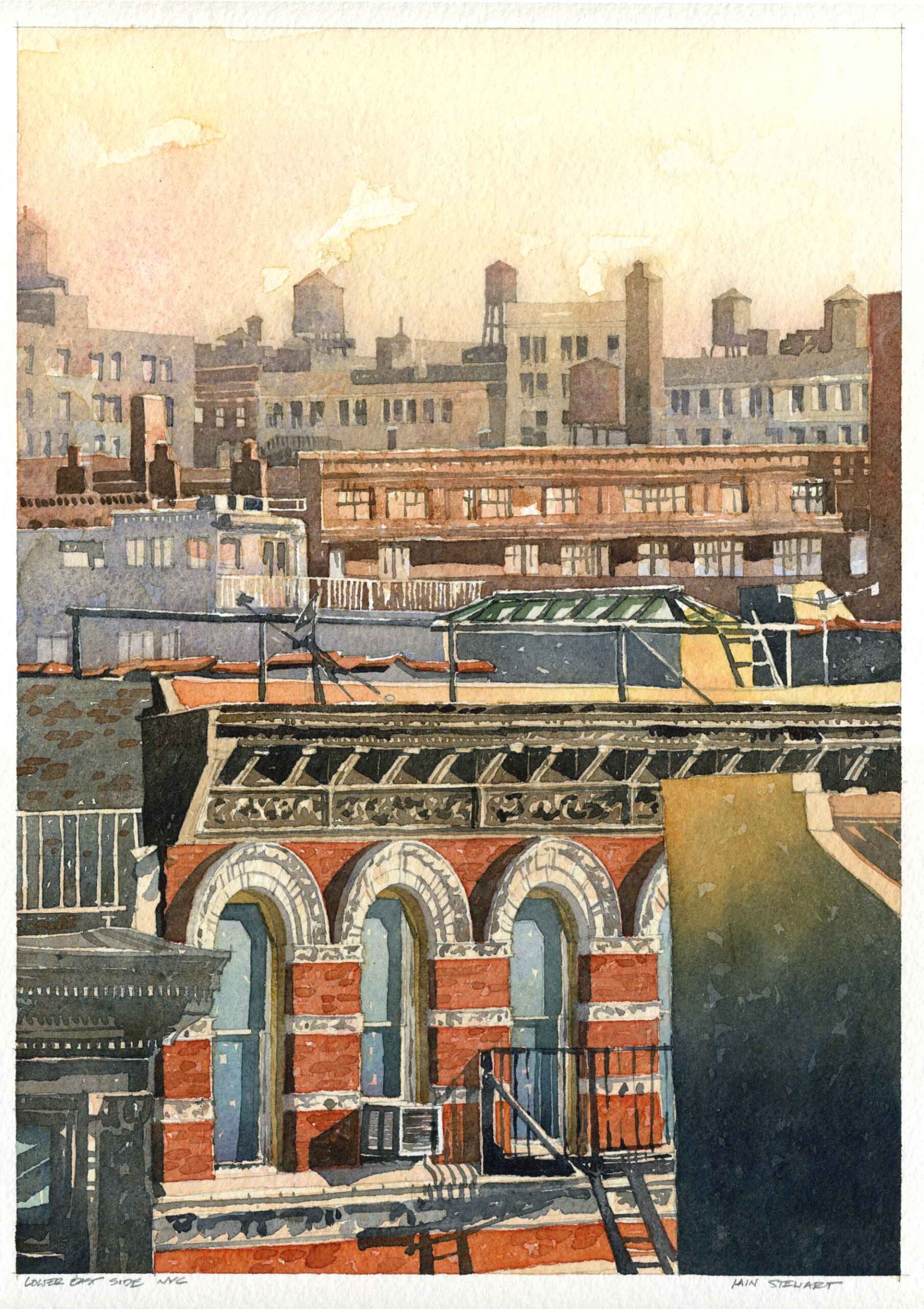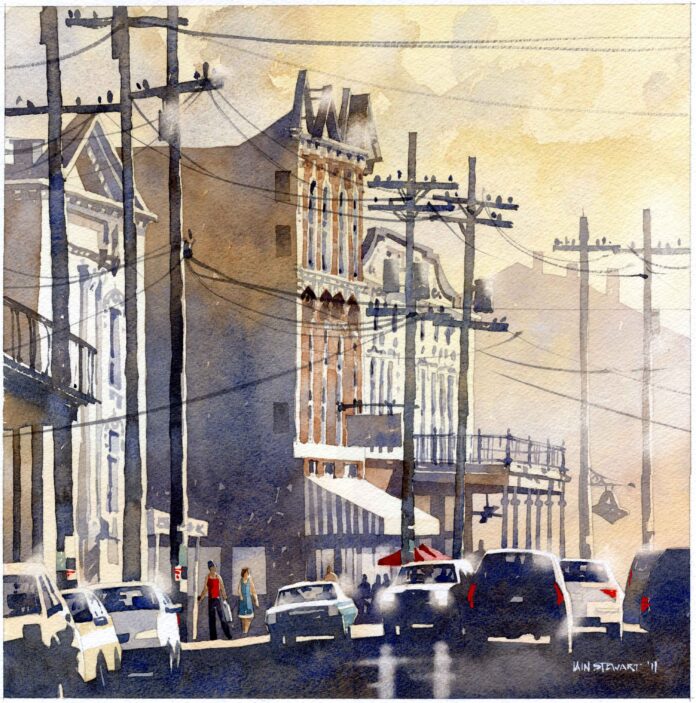Plein Air Watercolor > Working from both direct observation and memory, Alabama artist Iain Stewart believes it is more important to express how he views the world rather than how it might actually appear.
Painting What I Choose to See
“Good paintings teach a watercolorist very little,” says Iain Stewart. “It’s the bad paintings that instruct me how to improve my work because I have to look critically at them to identify the reasons they failed. Too many artists focus on creating masterpieces, and they are crushed when they are not successful. In my experience as a painter and teacher, plein air watercolors are more successful when artists risk failure, paint with abandon, and then evaluate the results.”
Iian has several recommendations to help watercolorists go from risk-taking to successful paintings. The first is that artists should work from life to learn the way light works, how shadows move across the landscape, what different lighting and atmospheric conditions they might encounter, and when they might inject what isn’t there into their paintings.
“Watercolor is uniquely suited for this task, as light is reserved from the first brushstroke and must be protected throughout the painting process,” he says. “It’s very much like a game of chess, in that the more moves one plans in advance, the better the result. I am most often motivated by capturing a definitive lighting condition and how it influences shapes and values rather than by the intention of faithfully representing the subject as witnessed.
“The more one makes observations from nature, whether recorded in a sketchbook or an easel painting, the easier it will be to jump to the imagined. The underlying narrative in my work is not based on any theme or the identity of the subject, but, quite simply, how ‘place’ is inhabited and used daily.”
The process by which Iain balances the risk of failure with a desire to capture the sense of place begins with thumbnail sketches in a small sketchbook. “I make one or two quick thumbnail value sketches in an effort to identify big shapes I can work into a composition,” he explains. “It’s a way of warming up, the way a musician might practice scales or an athlete would do stretching exercises. I can’t just walk up to my easel and paint. I need to move elements within the scene to make the painting stronger. I reduce those elements to the essentials, discarding what is unnecessary and then adding useful elements.”

Iain shares more of his plein air watercolor tips and advice in the newly released PaintTube.tv video workshop, “Higher Level Sketching.”




